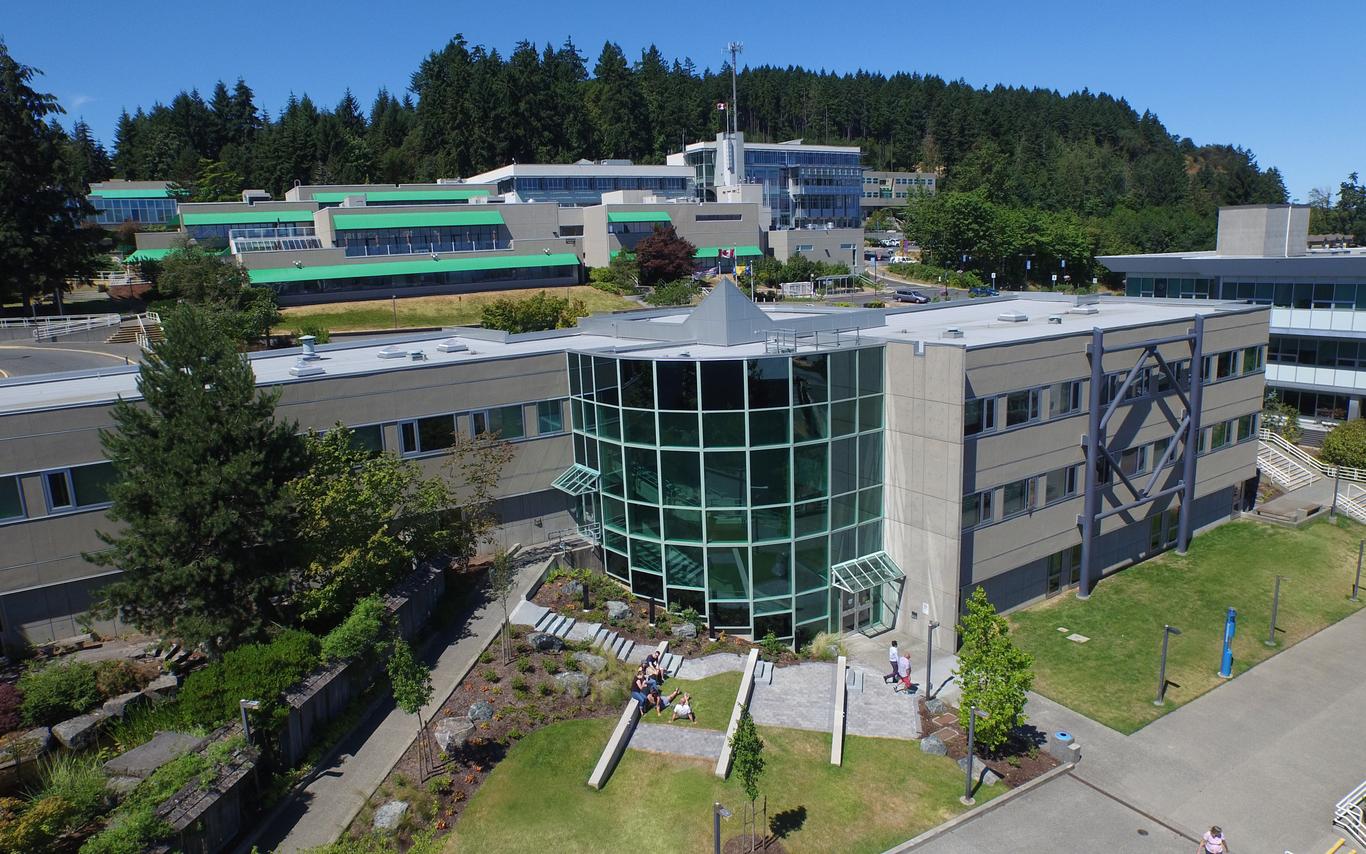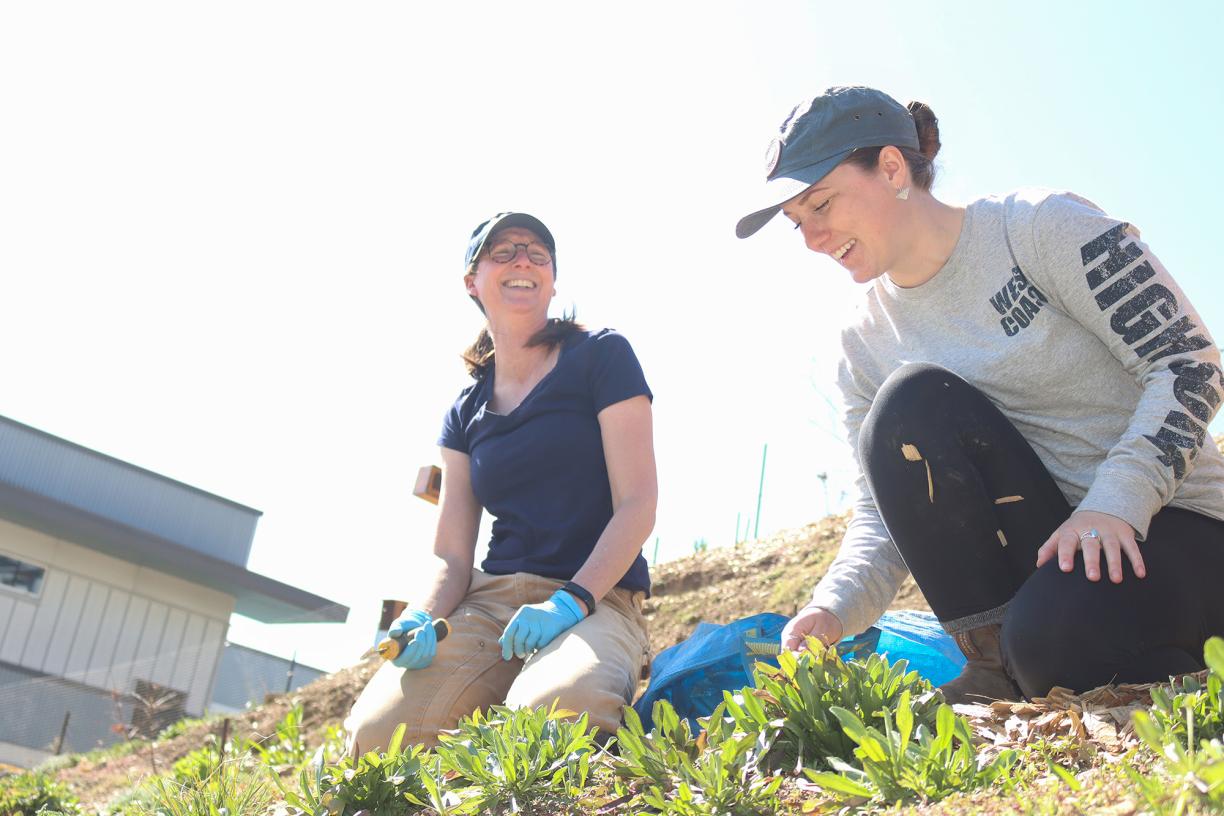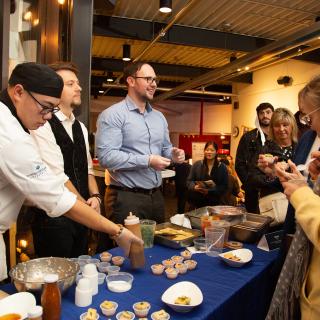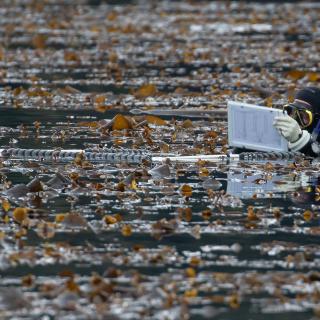Caroline Josefsson, a VIU Biology Professor, left, and VIU student Megan Kollman work in the Garry oak ecosystem restoration plot at the Nanaimo campus. Vancouver Island University Photo
The Garry oak ecosystem is home to many species at risk in British Columbia.
One of Canada’s most threatened ecosystems – the Garry oak – is coming to life on VIU’s Nanaimo campus.
VIU employees, students and community volunteers have maintained a Garry oak ecosystem restoration plot since 2021. The 500-square-metre plot is located west of Building 470 near the top of campus. Dr. Caroline Josefsson, a VIU Biology Professor and botanist, oversees the project.
“We’re all aware of global warming and climate change. There are a few things we could do as individuals, but most people can’t afford to buy an electric vehicle or have solar panels on their house, so it can feel hopeless,” said Josefsson. “By planting native plants in our community, which is affordable and within reach, you see from one day to another that you are making a difference in reversing the biodiversity crisis we’re in. It’s good for the soul.”
According to the Garry oak ecosystems recovery team the Garry oak ecosystem is home to many species at risk in British Columbia. Many of these species aren’t found anywhere else in Canada. Threats to the ecosystem include development, invasive species and habitat fragmentation.
“The Garry oak ecosystem is the most biodiverse of all ecosystems in Canada and is home to about 100 rare species of plants and animals,” said Josefsson. “Any one of these species is important in its own right as it represents millions of years of co-evolution with all the other members of the ecological community in which it resides. Preserving intact ecosystems is always the best way to protect individual rare and threatened species.”
Garry oaks are drought-tolerant plants because they are slow-growing and have deep root systems. Their waxy leaves also prevent too much water loss. It is unknown whether Garry oaks were present on the Nanaimo campus in the past, but it is likely since it is near Harewood Plains, a remnant of the Garry oak ecosystem.
Josefsson said Coast Salish peoples have cared for and maintained this ecosystem for several millennia for food, medicine and game. They maintained it through selective harvesting of edible plants, weeding and periodic burning to prevent encroachment by conifers.
VIU’s Garry oak ecosystem project has received support through fundraising by VIU’s Eco Club and a VIU Innovate grant. Anyone interested in learning more about the project, or how to volunteer, can contact Josefsson at Caroline.Josefsson@viu.ca and follow the Garry Oak project on Instagram.
-30-
Media Contact:
Rachel Stern, Communications Officer, Vancouver Island University
C: 250.618.0373l E: Rachel.Stern@viu.ca | T: @VIUNews





